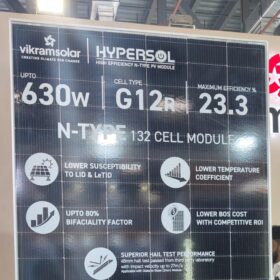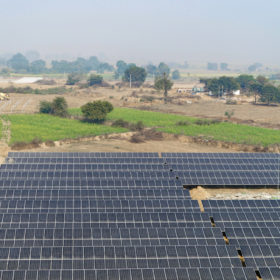Historically, we have had a heavy reliance on solar imports from China. But the post-pandemic world brought travel restrictions and supply disruptions, leading to countries looking elsewhere for more reliable options. We need to get back to the basics and focus on manufacturing. Self-reliance is the ultimate virtue in the context of ever-changing macroeconomics.
A relatively weak infrastructure coupled with a lack of funding has put experts in limbo about whether our targets are realistic. Our goal is to sufficiently supply solar modules in the domestic and international markets and ultimately be energy independent.
Gujarat accounts for 50% of India’s solar module production capacity; whereas Telangana accounts for 39% of the total production capacity of solar cells.
A multi-pronged policy mix has been adopted by the government to promote solar adoption. In the Budget 2024-25, a corpus of INR 10,000 crore was allocated to promote the solar industry, a 110% increase from the previous year.
Solar manufacturing equipment have been exempt from the BCD (basic customs duty) list to boost domestic manufacturing. In contrast, there is a 10% customs duty on the import of solar glass as we currently have enough capacity to meet all our domestic requirements.
If one were to do a cost analysis of the different stages of production of a PV panel, we would find that the earlier stages of the PV manufacturing chain, like the making of polysilicon and ingots, were costlier than the latter stages. We need to hone our expertise in these types of highly specialised processes.
India’s Ministry of New and Renewable Energy (MNRE) has introduced the domestic content requirement (DCR) policy to promote the Make in India initiative; solar panels that meet the a
government’s requirement to promote local manufacturing are classified as DCR (domestic content requirement) panels.
Currently, DCR panels are significantly more expensive than their non-DCR counterparts; the difference is about INR 10 per watt. Decreasing the cost of DCR modules is not only inherently a flagbearer of a self-reliant India but also will simultaneously pull down the cost of the solar system significantly, making adopting solar much more affordable.
Apart from these, there are Approved List of Models and Manufacturers (ALMM) and production-linked incentive (PLI) policies in place to protect domestic manufacturers. ALMM is a list of solar module types and manufacturers that have been certified by BIS (Bureau of Indian Standards) and have been approved by the MNRE.
Solar module exports in FY 2023-24 were approximately $2 billion and have grown by 90% year-on-year. On the other hand, imports are a mammoth $4 billion. Despite the current module export surplus, the decreasing gap has been positively impacting our GDP. The initiatives and incentives deployed by the government coupled with the fervour in the private sector have led to this.
India and the whole world is making a billion-dollar bet on solar as we move towards building a sustainable world. Predicting the exact energy mix of the future is a tough task, but solar will undeniably be the cornerstone of it.
The views and opinions expressed in this article are the author’s own, and do not necessarily reflect those held by pv magazine.
This content is protected by copyright and may not be reused. If you want to cooperate with us and would like to reuse some of our content, please contact: editors@pv-magazine.com.








By submitting this form you agree to pv magazine using your data for the purposes of publishing your comment.
Your personal data will only be disclosed or otherwise transmitted to third parties for the purposes of spam filtering or if this is necessary for technical maintenance of the website. Any other transfer to third parties will not take place unless this is justified on the basis of applicable data protection regulations or if pv magazine is legally obliged to do so.
You may revoke this consent at any time with effect for the future, in which case your personal data will be deleted immediately. Otherwise, your data will be deleted if pv magazine has processed your request or the purpose of data storage is fulfilled.
Further information on data privacy can be found in our Data Protection Policy.